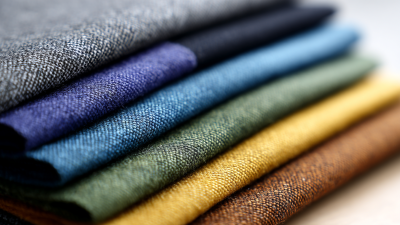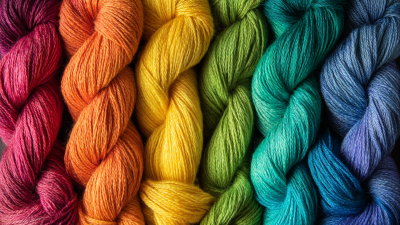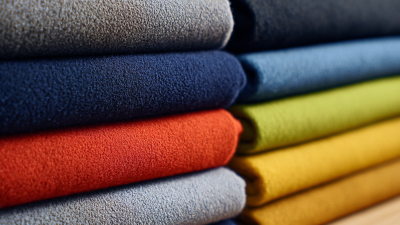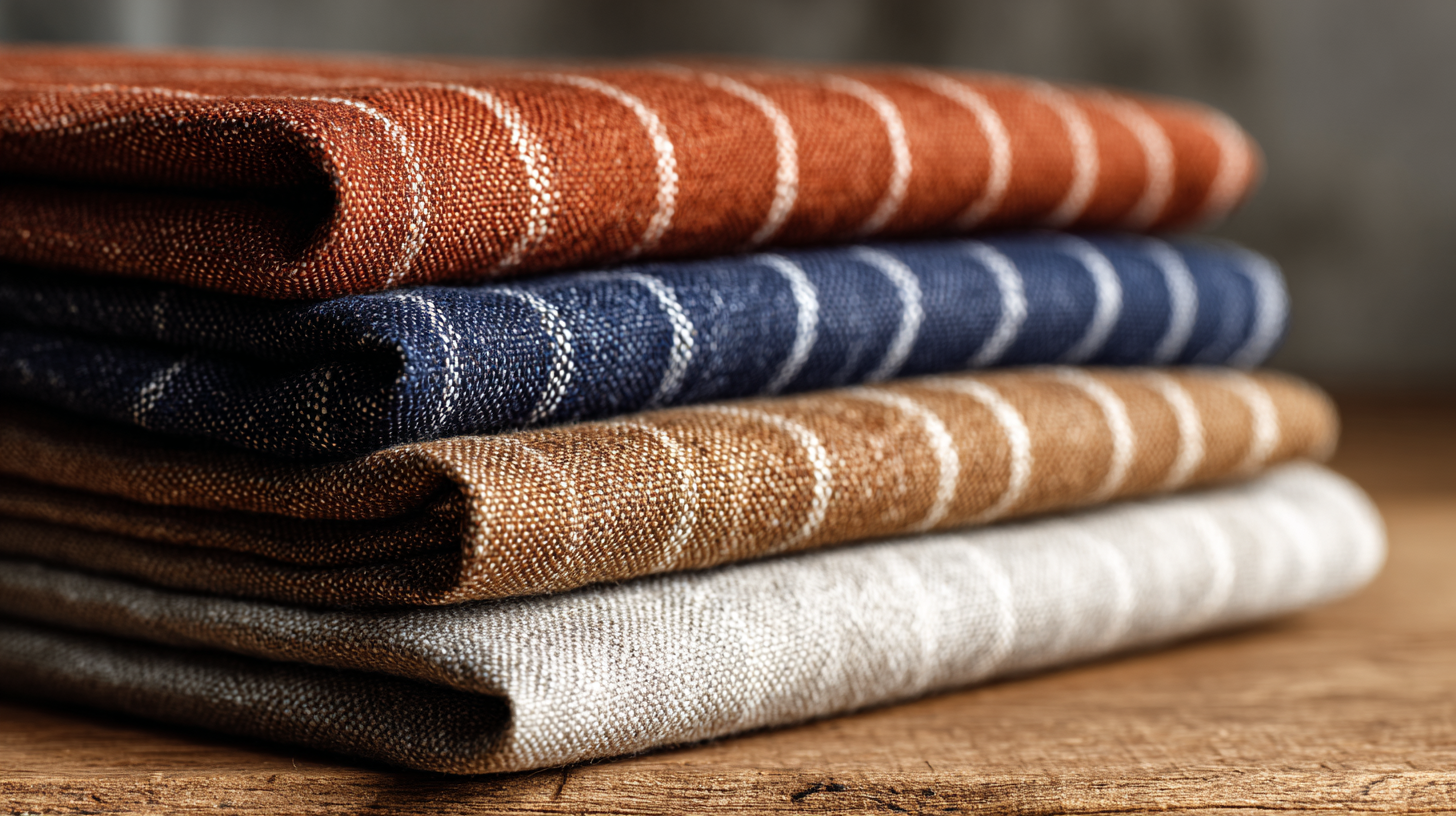 In the quest for sustainable fashion, "Yarn Dyed Cotton Fabric" emerges as a pivotal choice for environmentally conscious consumers and designers alike in 2024. This innovative textile not only showcases the beauty of rich colors and patterns but also emphasizes a commitment to eco-friendly practices. With increasing awareness about the environmental impact of fabric production, yarn-dyed cotton stands out due to its reduced water consumption and longer-lasting quality. This introduction will guide you through the essential aspects of incorporating yarn dyed cotton into your wardrobe, from understanding its benefits and production methods to styling tips that enhance its vibrant appeal. Embrace this sustainable fabric as a step toward a more responsible fashion future, where style meets environmental stewardship.
In the quest for sustainable fashion, "Yarn Dyed Cotton Fabric" emerges as a pivotal choice for environmentally conscious consumers and designers alike in 2024. This innovative textile not only showcases the beauty of rich colors and patterns but also emphasizes a commitment to eco-friendly practices. With increasing awareness about the environmental impact of fabric production, yarn-dyed cotton stands out due to its reduced water consumption and longer-lasting quality. This introduction will guide you through the essential aspects of incorporating yarn dyed cotton into your wardrobe, from understanding its benefits and production methods to styling tips that enhance its vibrant appeal. Embrace this sustainable fabric as a step toward a more responsible fashion future, where style meets environmental stewardship.
Yarn dyed cotton fabric is emerging as a frontrunner in the sustainable fashion markets, gaining traction among environmentally conscious consumers. According to the Global Organic Textile Standard (GOTS), the demand for organic cotton has surged by over 30% in the past two years, with yarn dyed options leading the charge. This shift is largely fueled by a growing awareness of the environmental impact of fashion, prompting brands to seek out sustainable materials that minimize water use and chemical exposure during production.
Furthermore, a report from the Textile Exchange highlights that the use of yarn dyed cotton can significantly reduce water consumption, decreasing it by up to 90% compared to conventional dyeing processes. This not only aids in conserving precious natural resources but also aligns with the sustainable goals of many fashion retailers. As the dialogue around eco-friendly fashion amplifies, brands that prioritize yarn dyed cotton are expected to capture a larger market share, appealing to a demographic that values both style and sustainability. The fusion of aesthetic appeal and responsible sourcing positions yarn dyed cotton as a pivotal player in the evolution of sustainable fashion in 2024.
| Category | Percentage of Market Share (%) | Growth Rate (2023-2024) | Environmental Impact Score | Consumer Awareness Rating |
|---|---|---|---|---|
| Casual Wear | 35 | 15% | 8 | 75% |
| Athleisure | 25 | 20% | 9 | 80% |
| Formal Wear | 15 | 8% | 7 | 70% |
| Home Textiles | 15 | 12% | 10 | 65% |
| Accessories | 10 | 18% | 6 | 60% |
Yarn dyed cotton fabric offers significant environmental benefits, particularly in reducing water and chemical usage. Traditional dyeing processes often require copious amounts of water and toxic chemicals, leading to substantial ecological footprints. In contrast, yarn dyeing minimizes these resources by incorporating color during the spinning phase, significantly decreasing the volume of water needed throughout the production process. This innovative approach not only conserves water but also diminishes wastewater pollution, making it a more sustainable choice for the fashion industry.
Furthermore, the use of natural dyes in yarn dyed cotton enhances its eco-friendly profile. Many manufacturers are now opting for organic dyes derived from plants, which further reduce chemical usage and harmful emissions. This transition not only promotes better health for workers in textile production but also ensures that consumers are wearing garments that have less impact on the environment. As we move into 2024, embracing yarn dyed cotton fabric can significantly contribute to a greener fashion industry, aligning with the growing demand for sustainable and responsible clothing choices.
As the fashion industry shifts towards sustainability, consumer trends in 2024 show a marked increase in the demand for eco-friendly fabrics, particularly yarn dyed cotton. According to recent data from the Sustainable Fashion Institute, 67% of consumers are now prioritizing sustainability when making purchasing decisions. This change is driven by a growing awareness of environmental issues and a desire for transparency in the sourcing of materials. Yarn dyed cotton, known for its durability and vibrant colors, not only meets aesthetic demands but also aligns with sustainable practices, making it a popular choice among conscious consumers.
Tips for Embracing Eco-Friendly Fabrics:
1. Look for certifications like GOTS (Global Organic Textile Standard) when shopping for yarn dyed cotton products, ensuring they meet strict environmental and social criteria.
2. Consider incorporating second-hand or upcycled yarn dyed cotton items into your wardrobe, reducing waste and extending the lifecycle of these materials.
As the market for sustainable textiles continues to grow, fashion brands are encouraged to invest in eco-friendly options, as highlighted in the latest report by the Eco Textile Association, which predicts that the sustainable fabric market will reach $90 billion by 2025. This presents an exciting opportunity for both consumers and manufacturers to contribute to a greener planet while enjoying high-quality fashion.
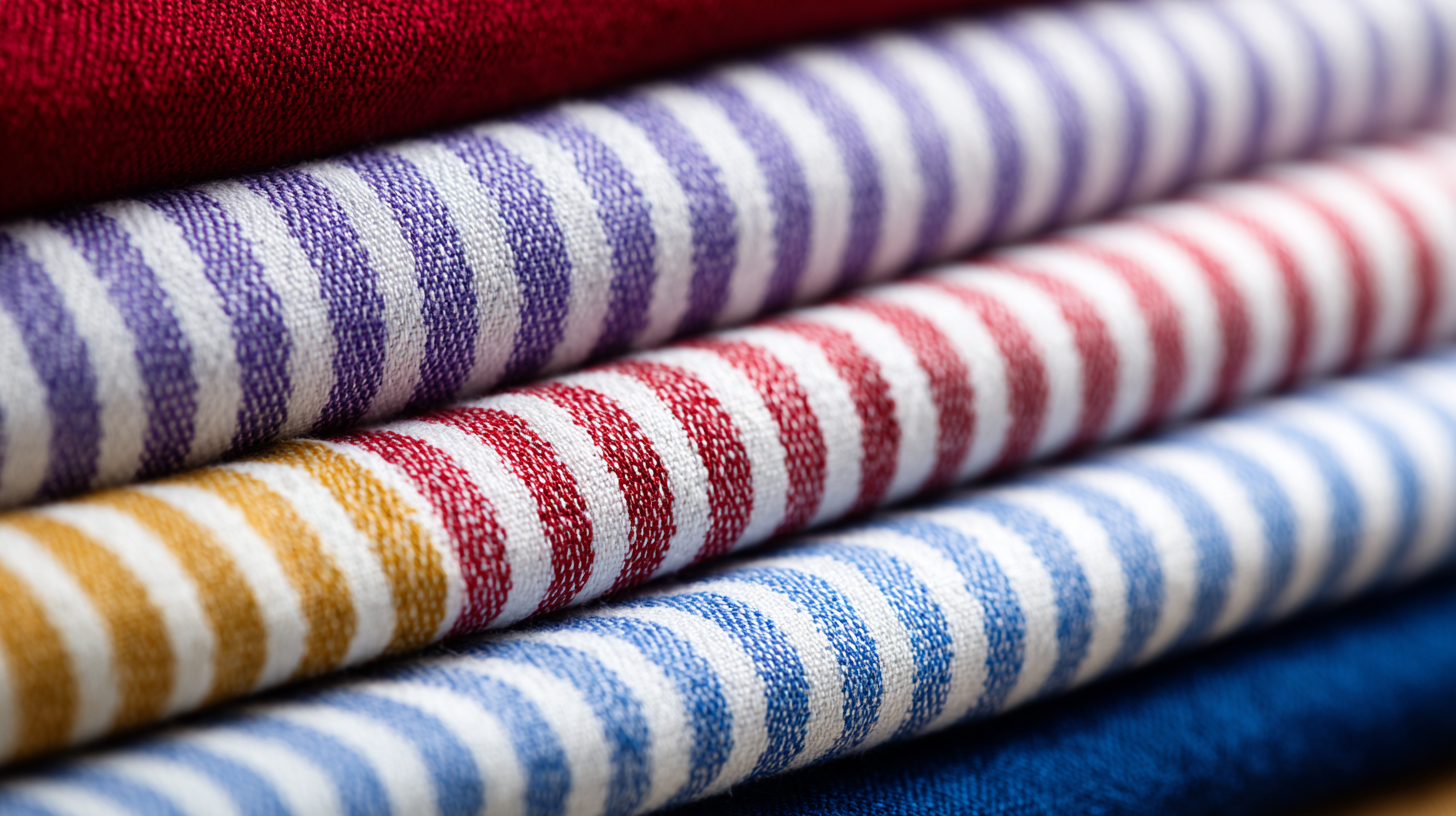 Yarn dyed cotton fabric is making waves in the fashion industry, not just for its aesthetic appeal but also for its economic feasibility. As brands increasingly shift towards sustainable practices, the cost-effectiveness of yarn dyed cotton is leading the charge. Unlike conventional fabric dyeing methods, which can be resource-intensive and expensive, yarn dyeing offers a more economical alternative. The pre-dyeing of yarns allows for better color retention and a longer lifespan of the fabric, reducing the need for frequent replacements. This translates into significant savings for manufacturers and consumers alike.
Yarn dyed cotton fabric is making waves in the fashion industry, not just for its aesthetic appeal but also for its economic feasibility. As brands increasingly shift towards sustainable practices, the cost-effectiveness of yarn dyed cotton is leading the charge. Unlike conventional fabric dyeing methods, which can be resource-intensive and expensive, yarn dyeing offers a more economical alternative. The pre-dyeing of yarns allows for better color retention and a longer lifespan of the fabric, reducing the need for frequent replacements. This translates into significant savings for manufacturers and consumers alike.
When looking to incorporate yarn dyed cotton into your wardrobe, consider the following tips: first, invest in versatile pieces that can be mixed and matched, maximizing your outfit options without breaking the bank. Next, always check for certifications that ensure the cotton is sourced sustainably, which not only helps the environment but may also come with long-term quality benefits. Lastly, buying in-season collections can help you snag these eco-friendly pieces at a competitive price, ultimately supporting sustainable fashion while keeping your budget in check. By making informed choices, you contribute to a more sustainable future in fashion.
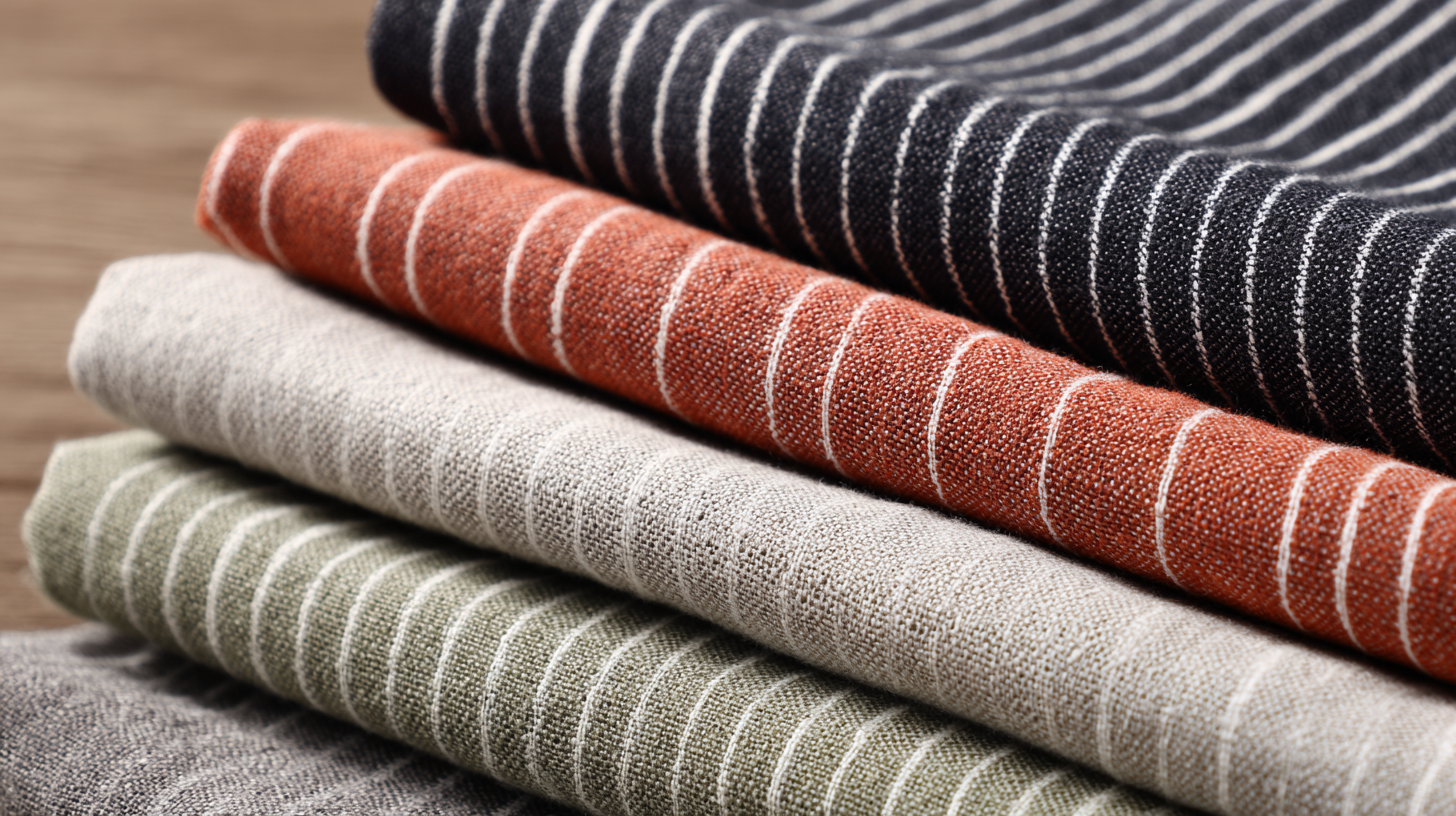 The advancement of sustainable dyeing processes for cotton fabrics is pivotal in transforming the fashion industry. Innovative techniques such as waterless dyeing technology have emerged, significantly reducing water consumption and minimizing environmental impact. These methods utilize advanced machinery that applies dyes using air or supercritical CO2, ensuring vibrant colors while conserving essential resources. By embracing these technologies, manufacturers can produce high-quality yarn dyed cotton fabrics that cater to eco-conscious consumers.
The advancement of sustainable dyeing processes for cotton fabrics is pivotal in transforming the fashion industry. Innovative techniques such as waterless dyeing technology have emerged, significantly reducing water consumption and minimizing environmental impact. These methods utilize advanced machinery that applies dyes using air or supercritical CO2, ensuring vibrant colors while conserving essential resources. By embracing these technologies, manufacturers can produce high-quality yarn dyed cotton fabrics that cater to eco-conscious consumers.
Another promising approach involves the use of natural dyes derived from plants, minerals, and insects. These dyes not only reduce reliance on harmful synthetic chemicals but also promote biodiversity by sourcing materials sustainably. Furthermore, some innovative processes incorporate upcycling waste, turning agricultural byproducts into dye materials. This not only mitigates waste but also supports a circular economy in the textile sector. As brands invest in these sustainable dyeing techniques, they pave the way for a greener future in fashion, where style and environmental responsibility go hand in hand.
